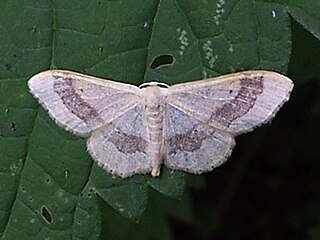
Idaea, sometimes called Hyriogona, is a large genus of geometer moths. It was erected by Georg Friedrich Treitschke in 1825. They are found nearly worldwide, with many native to the Mediterranean, the African savannas, and the deserts of western Asia.

Orthonama obstipata, the gem, is a moth of the family Geometridae. The species was first described by Johan Christian Fabricius in 1794. It is common in continental Europe and adjacent lands, though in the northeast, its range does not significantly extend beyond the Baltic region and it is absent from northern Russia. This well-flying species is somewhat prone to vagrancy and able to cross considerable distances of open sea; it can thus be regularly found on the British Isles and even on Iceland.
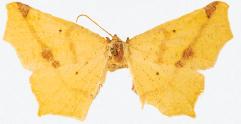
Antepione is a genus of moths in the family Geometridae, the geometer moths. The genus was described by Packard in 1876. They occur in North and Central America.
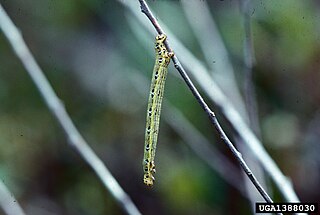
Cingilia is a monotypic moth genus in the family Geometridae erected by Francis Walker in 1862. Its only species, Cingilia catenaria, the chain-dotted geometer, chain dot geometer, chainspotted geometer or chain-spotted geometer, was first described by Dru Drury in 1773. It is found in North America from Nova Scotia south to Maryland and west to Kansas and Alberta.

Digrammia was a genus of moths in the family Geometridae erected by Carl Freiherr von Gumppenberg in 1887. It is now often considered a synonym of Semiothisa.

Erannis is a geometer moth genus of the subfamily Ennominae erected by Jacob Hübner in 1825. It is placed by some entomologists in the tribe Erannini as the type genus, but others merge this group into the tribe Boarmiini or Bistonini.

Eumacaria is a monotypic moth genus in the family Geometridae described by Packard in 1873. Its only species, Eumacaria madopata, the brown-bordered geometer moth, was first described by Achille Guenée in 1857. It is found in North America, where it has been recorded from British Columbia, northern Washington, southern Saskatchewan, from Maine to Florida, South Dakota, North Dakota, Nebraska, Wyoming, Idaho, Colorado and New Mexico. The habitat consists of orchards and shrublands. The species is listed as threatened in Connecticut.

Hesperumia is a genus of moths in the family Geometridae. The genus was described by Packard in 1873.
Holochroa is a monotypic moth genus in the family Geometridae. Its only species, Holochroa dissociarius, is found in North America. The species was described by George Duryea Hulst in 1887 and he described the genus nine years later in 1896.
Hydriomena is a genus of moths in the family Geometridae described by Jacob Hübner in 1825.
Lophosis is a monotypic geometrid moth genus. Its only species, Lophosis labeculata, the stained lophosis moth, is found in North America. Both the genus and species were first described by George Duryea Hulst, the genus in 1896 and the species in 1887.

Perizoma is a genus in the geometer moth family (Geometridae). It is the type genus of tribe Perizomini in subfamily Larentiinae. The tribe is considered monotypic by those who include the genera Gagitodes, Martania and Mesotype in Perizoma. Some other less closely related species formerly placed here are now elsewhere in the Larentiinae, e.g. in Entephria of the tribe Larentiini.

Plataea is a genus of geometrid moths in the family Geometridae. There are about 11 described species in Plataea.

Spodolepis substriataria is a moth of the family Geometridae first described by George Duryea Hulst in 1896. It is found from Alaska to Nova Scotia, south in the east to New Jersey and in the west to California.

Thallophaga is a genus of moths in the family Geometridae described by George Duryea Hulst in 1896.
Zenophleps is a genus of moths in the family Geometridae first described by George Duryea Hulst in 1896.

Hydriomenini is a tribe of geometer moths under subfamily Larentiinae. The tribe was erected by Edward Meyrick in 1872.

Xanthorhoini is a tribe of geometer moths under subfamily Larentiinae. The tribe was described by Pierce in 1914.
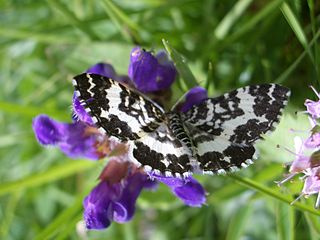
Rheumapterini is a tribe of geometer moths under subfamily Larentiinae.

Pero occidentalis, the western pero, is a species of geometrid moth in the family Geometridae. It was described by George Duryea Hulst in 1896 and is found in North America.

















